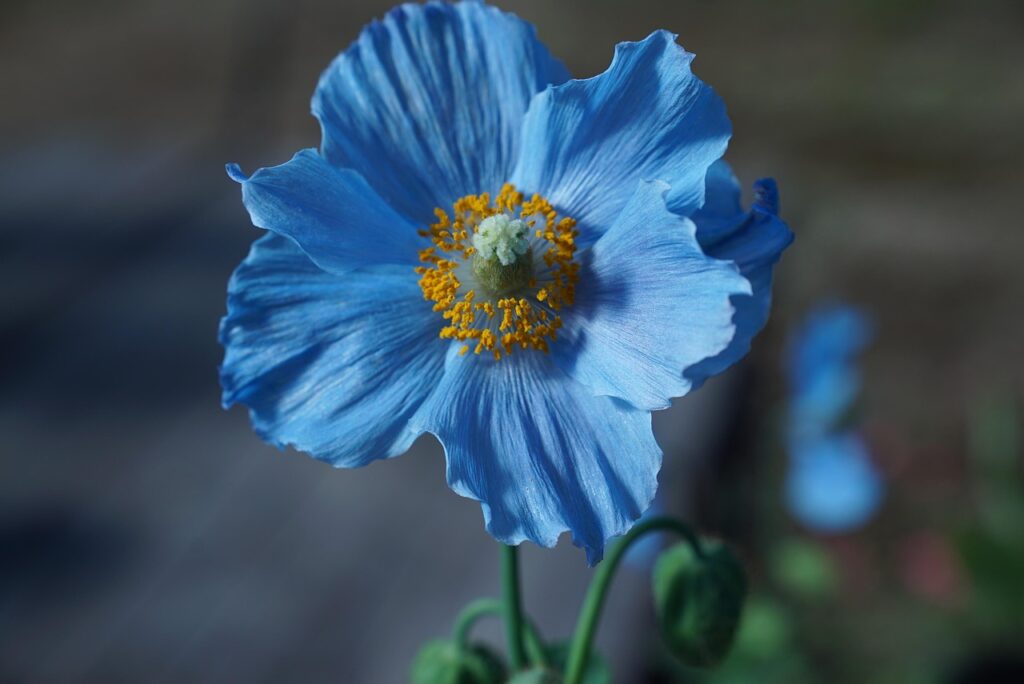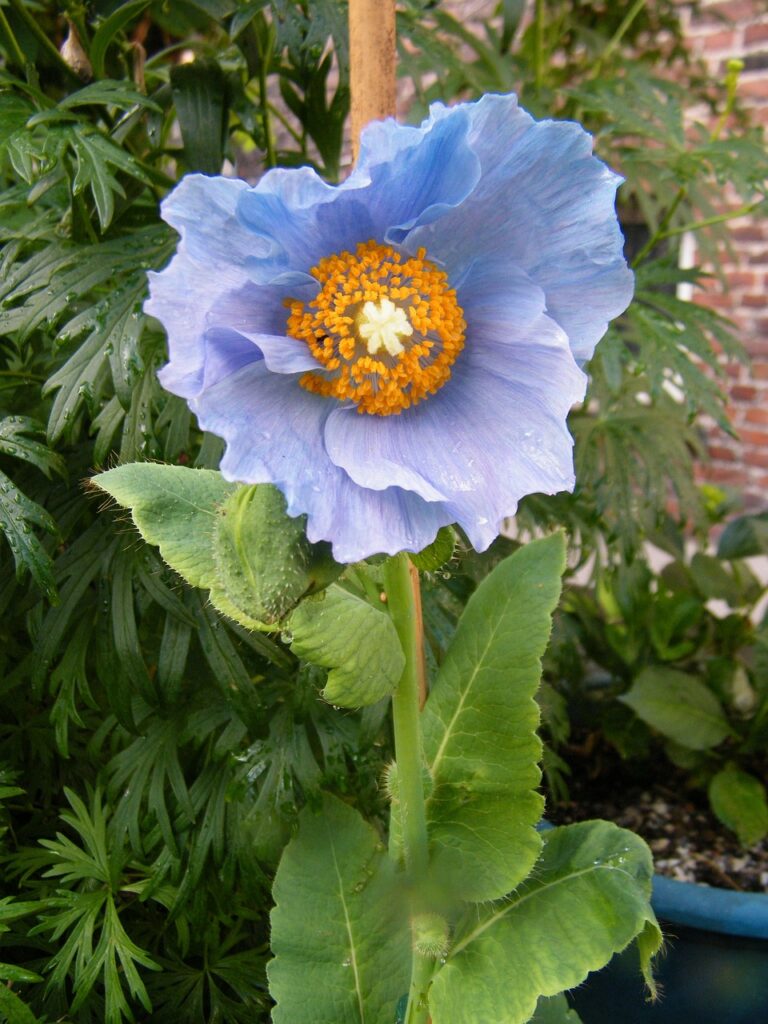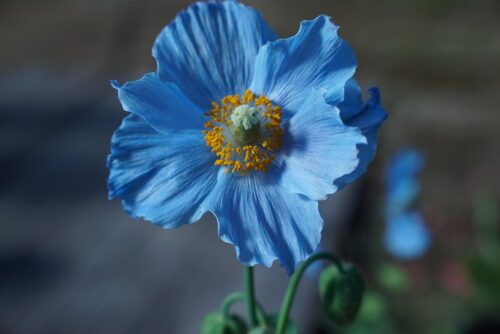
By Cheryl Anderson
Have you ever pondered a poppy that is blue? Whose gossamer petals seem almost unimaginable or is there such a thing as a blue poppy?
The Victorian naturalists began the introduction of “new foreign plants.” By the beginning of the twentieth century plant hunting had become commercialized.
In The Land of Blue Poppies, ed. Michael Pollan and Tom Christopher, is about Frank Kingdon Ward’s adventures of plant hunting in Tibet. Extraordinary stories of adventure and daring. The book’s commentary is drawn from four of Ward’s 25 journals chronicling his 24 expeditions to Tibet, Southeast Asia, China, Burma and Assam.

Ward brought back the first viable seeds of the Tibetan blue poppy to England, thus making it possible to successfully grow them away from the wilds of Tibet. To determine whether or not a plant is suitable for the garden, is when it’s blooming, requiring a second visit when it has gone to seed. Ward remembered the locations of specimens, even finding them again buried under snow. The blue poppy was first presented at the Royal Horticulture Society’s summer show in 1926 causing quite a stir and excitement was all the rage…new and exotic plants!
Intrepid, adventurous and brave, Ward risked his life at every turn; “heights terrified him and he hated the cold”, but loved every minute of the perils he faced. Although travel to such remote locations was difficult, it was when Ward felt the most alive. To help pay for the expeditions, “wealthy young aristocrats bought….spots…..on Kingdon Ward’s expeditions.”

For food, what they could shoot and silver bullion was exchanged for supplies from villages. Brick tea was preferred by the Tibetans as payment for goods…..as silver bullion didn’t do them much good deep in the wilderness. Mules were his choice of transportation, but often only humans could negotiate the narrow passes and trails. One slip could be fatal and then there were bandits to deal with. His reward was coming upon scenes such as “woods … swamped in a lagoon of pale violet flag irises. When the wind ruffled them, they danced like butterflies on a green baize cloth”, Ward or “fields of alpine flowers and forests of rhododendron blossoms”. It truly was, as Ward put it, a “Plant Hunter’s paradise.”

For most of us, our plant hunting and collecting begins and ends at the local nursery. That said, “Kingdon Ward’s memoirs are sure to connect with anyone who has ever hefted a spade.” A true collector is thrilled finding a plant new to themselves. It’s not necessary to have discovered it.
Closer to home, every April and May, you’ll find blue poppies in the meadow at the Rhododendron Species Botanical Garden, Federal Way, Washington, info@rhodygarden.org.
And……..blue poppies can most certainly be found in England and Scotland!
Happy Hunting!






